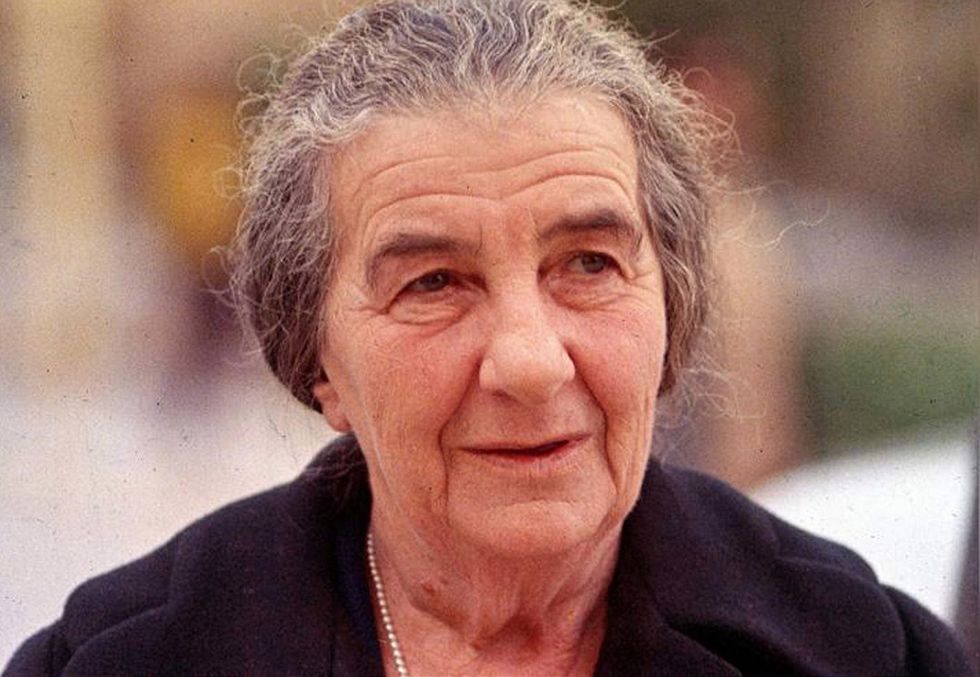On May 3, 1989, Golda Mabovich, later known as Golda Meir, was born in present-day Ukraine. In 1903, Golda and her family boarded up their home in response to rumors of an immigrant pogrom and eventually emigrated to Milwaukee, Wisconson by 1905. Throughout her early years, she went to elementary school in Milwaukee and later moved to Denver with her older sister where she learned about many things such as Zionism, women's suffrage, trade unions and more. She went on to graduate high school and get her teaching certificate and then married a man named Morris Meyerson.
Golda Meir is best known for being the fourth Prime Minister of Israel and the first woman to hold this title. In 1921, she and her husband moved to Palestine and joined a Merhavia kibbutz or a communal settlement. During this interwar period, the majority of the Middle East was controlled by Great Britain and France due to the 1916 Asia Minor Agreement, Despite promises from British officials to establish a Jewish homeland, these empty sentiments never materialized during the interwar period.
During World War II, Golda Meir emerged as one of the most prominent Zionist spokespersons who called for the creation of a Jewish homeland to save those being persecuted by the Nazi regime in Europe. The British government cracked down on illegal immigration of Jewish citizens and Golda became the chief liaison and fought to free Jewish refugees who had violated these immigration policies. During this time, Meir also organized events in the United States to fundraise for the formation of a Jewish homeland.
After the end of World War II, in 1948, Israel declared its independence, with Meir being one of the signers in declaring Israeli independence. Initially, she was assigned to be an ambassador to Moscow however, the tension between Israel and other Arab nations was mounting and Meir returned and was elected to the Israeli parliament. Despite this tension, Israel managed to maintain its independence and actually gain more territory.
At age 68, Golda Meir planned on retiring from the public sphere however she was convinced by members of the Mapai party to remain in politics as the parties secretary general. Over the next two years, Meir merged her party with the Israeli Labor Party and pushed off retirement again after the death of Prime Minister Levi Eshkol, serving the remainder of his term. She formed alliances with the United States under Richard Nixon which aided in opening lines of communications with the United Arab Emirates in order to end hostilities between the UAE and Israel.
Between 1967 and 1973, Golda Meir was able to maintain relative peace between Israel and the Arab countries that surrounded it. She skillfully balanced the wishes of the radicals and the moderates who had differing opinions on how to maintain peace. This ended in 1973 however with the outbreak of the Yom Kippur War. Meir planned on using defense rather than an offensive fight against the Syrian and Egyptian forces, as a preemptive strike would look bad on a global scale. Meir and Israel were successful in this three-week skirmish in which they gained more land.
After the Yom Kippur War, Golda Meir finally retired and was succeeded by Yitzhak Rabin. Her retirement, however, was shortlived as she passed away in 1978 from lymphoma.
















